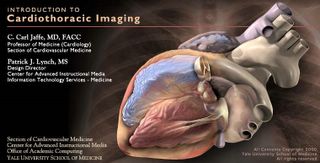1 Stephen J. Swensen, MD, James R. Jett, MD, Thomas E. Hartman, MD, David E. Midthun, MD, Sumithra J. Mandrekar, PhD, Shauna L. Hillman, MS, Anne-Marie Sykes, MD, Gregory L. Aughenbaugh, MD, Aaron O. Bungum, BS and Katie L. Allen, BS
1 From the Department of Radiology (S.J.S., T.E.H., A.M.S., G.L.A.), Division of Pulmonary and Critical Care Medicine (J.R.J., D.E.M.), Section of Biostatistics, Cancer Center Statistics Unit (S.J.M., S.L.H., K.L.A.), and Pulmonary Research Center (A.O.B.), Mayo Clinic, 200 First St SW, Rochester, MN 55905. Supported by the National Cancer Institute (CA 79935–01) and Mayo Clinic. Received September 29, 2004; revision requested October 26; revision received November 2; accepted November 10. Address correspondence to S.J.S. (e-mail:
swensen.stephen@mayo.edu).
PURPOSE: To report results of a 5-year prospective low-dose helical chest computed tomographic (CT) study of a cohort at high risk for lung cancer.
MATERIALS AND METHODS: After informed written consent was obtained, 1520 individuals were enrolled. Protocol was approved by institutional review board and National Cancer Institute and was compliant with Health Insurance Portability and Accountability Act, or HIPAA. Participants were aged 50 years and older and had smoked for more than 20 pack-years. Participants underwent five annual (one initial and four subsequent) CT examinations. A significant downward shift was evaluated in non–small cell lung cancers detected initially from advanced stage down to stage I by using a one-sided binomial test of proportions. Poisson regression and Fisher exact tests were used for comparisons with Mayo Lung Project.
RESULTS: In 788 (52%) men and 732 (48%) women, 61% (927 of 1520) were current smokers, and 39% were former smokers. After five annual CT examinations, 3356 uncalcified lung nodules were identified in 1118 (74%) participants. Sixty-eight lung cancers were diagnosed (31 initial, 34 subsequent, three interval cancers) in 66 participants. Twenty-eight subsequent cases of non–small cell cancers were detected, of which 17 (61%; 95% confidence interval: 41%, 79%) were stage I tumors. Diameter of cancers detected subsequently was 5–50 mm (mean, 14.4 mm; median, 10.0 mm). Analysis for a more than 50% shift in proportion of stage I non–small cell cancer detection did not show statistical significance. Forty-eight participants died of various causes since enrollment. Lung cancer mortality rate for incidence portion of trial was 1.6 per 1000 person-years. There was no significant difference in lung cancer mortality rates of cancers detected in subsequent examinations between this trial and Mayo Lung Project after separation of participants into subsets (2.8 vs 2.0 per 1000 person-years, P = .43).
CONCLUSION: CT allows detection of early-stage lung cancers. Benign nodule detection rate is high. Results suggest no stage shift.
(
Radiology 2005;235:259-265.)




